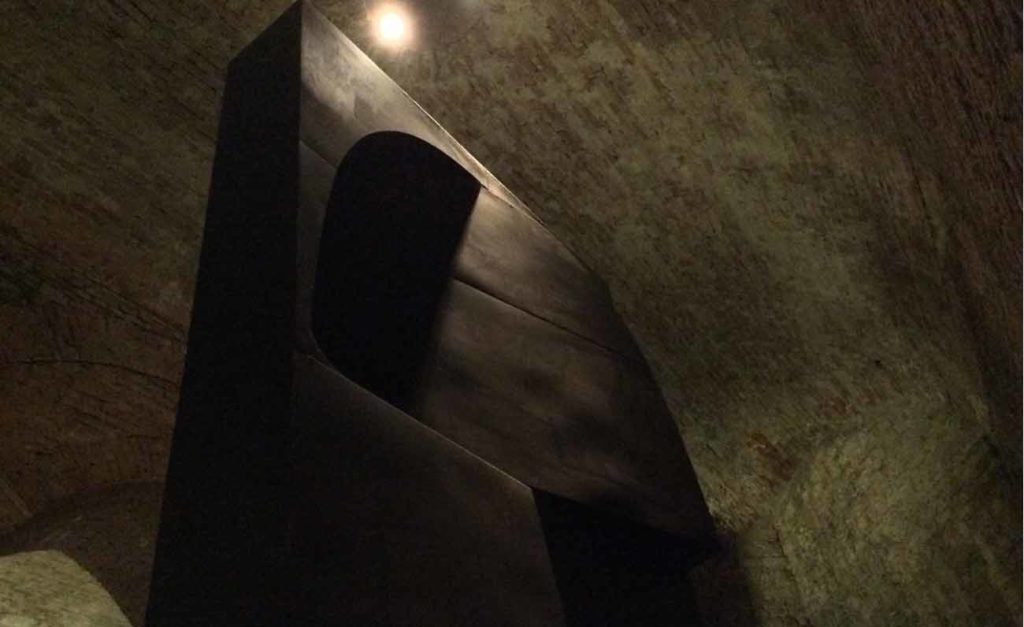I was talking to a friend of mine who decided to spend her holidays in Umbria. I found myself giving advice on local design-themed itineraries! Thinking about which stages could be more curious and interesting, I could not help mixing design with craftsmanship and architecture, facets of a single large area made of manual skills, planning and creativity that strongly characterizes the Umbrian territory.

During our chat, my friend was pleasantly surprised by the amount of small and large companies operating in these areas, but, to tell the truth, what she found most interesting was Aldo Rossi, architect and designer who worked in Perugia, drafting, in the Eighties, the project for the redevelopment of the Fontivegge district, designing a new face for the former Piazza del Bacio, now Piazza Nuova.
I will tell you what I told her a few days ago and I leave you some indications for a short route through this architectural work, the most important of Perugia in the Twentieth century.
The itinerary
Leave your car in Pian di Massiano and get the Minimetro: by doing so you can easily reach the Fontivegge district which, a few steps from the railway station, houses the complex of offices and houses that embrace the square. Coming from the station, you enter this space by passing through a large staircase; as soon as you go up, the feeling you have is to be extremely small because of the grandeur of the buildings surrounding this urban space. The eye is immediately enraptured by the main building, a modern temple with clock, characterized by a massive colonnade with a staircase that, like a fortress, dominates the area; on the sides, there are two other buildings with a highly rational character. In the center of the square stands a fountain with straight lines and a monolithic appearance, today – alas – without water. Other modern residential and commercial buildings complete the modern acropolis.
The architect accepted the assignment in 1983, designing the long-awaited business center. In fact, in the previous decade, the international competition launched by the municipal administration had been cancelled, since the winning project was too oversized and expensive to afford, especially because of the crisis that ran in the Seventies.

Architecture
Rossi, who was the first Italian to win the Pritzker Prize for architecture, designs a long brick-paved pedestrian square that follows the natural slope, similar to other Umbrian squares placed in the city center. Looking for dialogue and integration with the past, Aldo Rossi – in this as in many other projects – makes use of archetypes, recurring elementary geometric shapes in the history of architecture, easily recognizable and capable of making the project surprisingly innovative and traditional at the same time. In this regard, someone wanted to see in Piazza Nuova the modern revival of Piazza IV Novembre with the steps of San Lorenzo, Palazzo dei Priori and the Fontana Maggiore. Pure and essential geometries are also recurring in his projects as designers; at the beginning of the 1980s, Rossi devoted himself to this type of activity by designing miniature architectures for Alessi, creating poetic small-scale domestic landscapes; the Tea & Coffee Piazza project is the realization of this definition.

Stories, activities and projects
A story full of contaminations, therefore. I leave you with a last note: walking towards the park, you can notice a curious conical brick structure dating back to the 1920s, which break the penalty. It is the testimony of its original use, intended for one of the most important activities of Perugia; this brick tower is in fact a find of industrial archaeology: it is one of the old smokestacks of the Perugina confetti and chocolates factory that occupied this place from 1915 (year in which, in addition to the production of sugared almonds, the production line comes into operation cocoa powder and cocoa butter) until 1965, the year of transfer to the new industrial plant in San Sisto.
The original project, which also included the construction of a theater, was never completed and Rossi’s Piazza Nuova never played the role of modern acropolis desired at the time of the project. However, the charm of the monument remains intact. «I have always thought of architecture as a monument… only when it is realized as a monument does it constitute a place». A. Rossi
Rossi’s Piazza Nuova is also destined to have a new redevelopment; in these days, work began on the implementation of a project presented by the municipal administration. Who knows if this place will finally manage to have the long-awaited social and urban role thought by Rossi?
Ultimi post di Anna Bertinelli (vedi tutti)
- Aldo Rossi and Piazza Nuova in Fontivegge - Giugno 24, 2020
- Blu, il colore che non c’era - Agosto 28, 2019
- Aldo Rossi e la piazza Nuova di Fontivegge - Settembre 4, 2018



